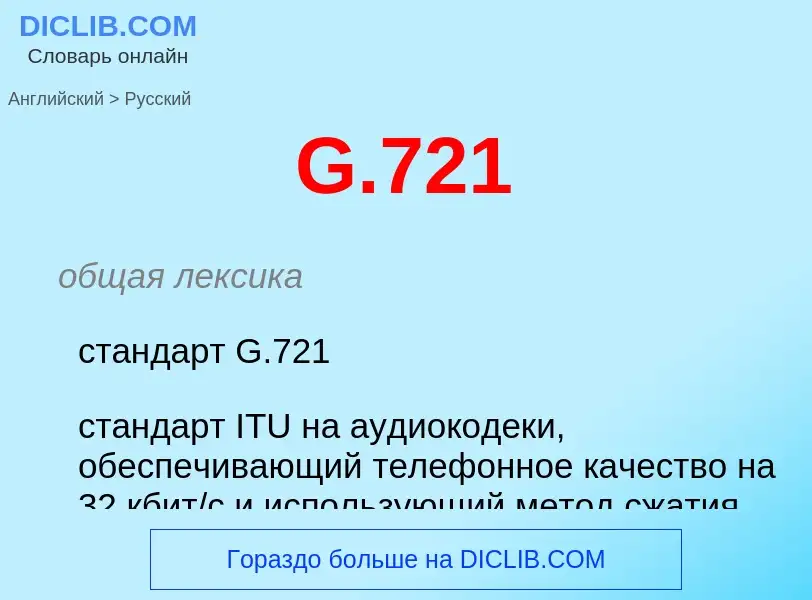Traducción y análisis de palabras por inteligencia artificial ChatGPT
En esta página puede obtener un análisis detallado de una palabra o frase, producido utilizando la mejor tecnología de inteligencia artificial hasta la fecha:
- cómo se usa la palabra
- frecuencia de uso
- se utiliza con más frecuencia en el habla oral o escrita
- opciones de traducción
- ejemplos de uso (varias frases con traducción)
- etimología
G 721 - traducción al Inglés
общая лексика
стандарт G.721
стандарт ITU на аудиокодеки, обеспечивающий телефонное качество на 32 кбит/с и использующий метод сжатия ADPCM
общая лексика
стандарт G.726, кодек G.726
стандарт сжатия звука, обеспечивающий скорость до 32 кбит/с за счет адаптивного дифференциального квантования, при котором передаются не абсолютные значения выборок, а их приращения, причем шаг квантования адаптивно меняется в зависимости от речевого сигнала
Definición
Wikipedia
G.726 is an ITU-T ADPCM speech codec standard covering the transmission of voice at rates of 16, 24, 32, and 40 kbit/s. It was introduced to supersede both G.721, which covered ADPCM at 32 kbit/s, and G.723, which described ADPCM for 24 and 40 kbit/s. G.726 also introduced a new 16 kbit/s rate. The four bit rates associated with G.726 are often referred to by the bit size of a sample, which are 2, 3, 4, and 5-bits respectively. The corresponding wide-band codec based on the same technology is G.722.
The most commonly used mode is 32 kbit/s, which doubles the usable network capacity by using half the rate of G.711. It is primarily used on international trunks in the phone network and is the standard codec used in DECT wireless phone systems. The principal application of 24 and 16 kbit/s channels is for overload channels carrying voice in digital circuit multiplication equipment (DCME). The principal application of 40 kbit/s channels is to carry data modem signals in DCME, especially for modems operating at greater than 4800 bit/s.

